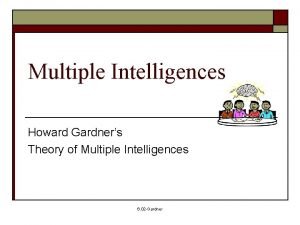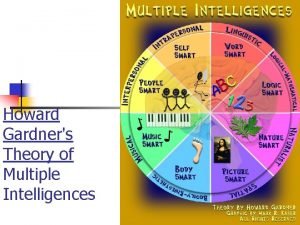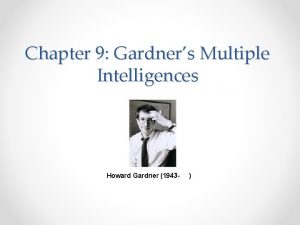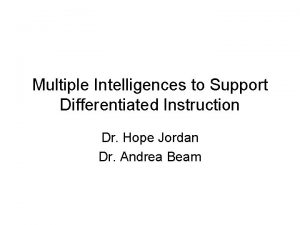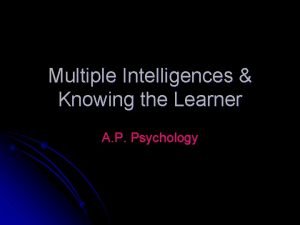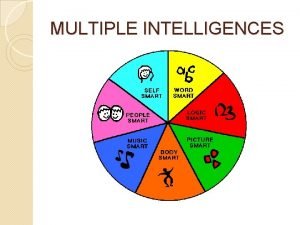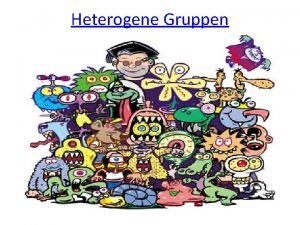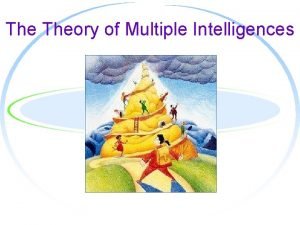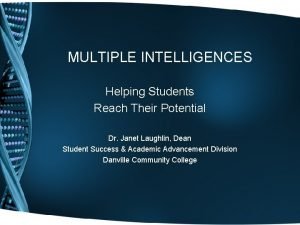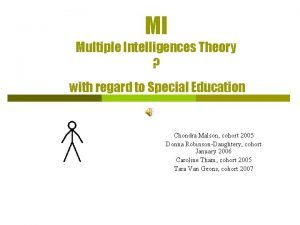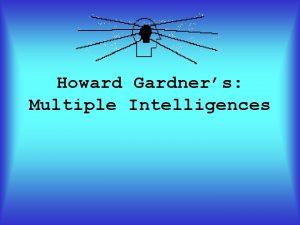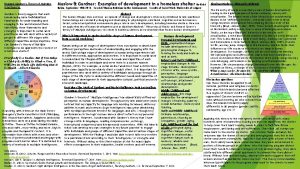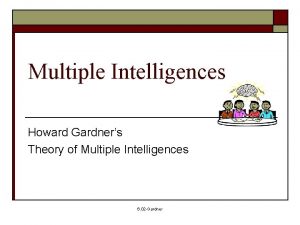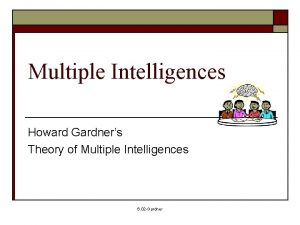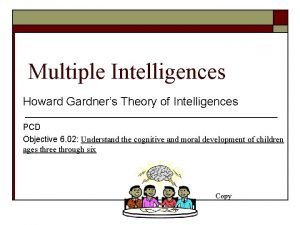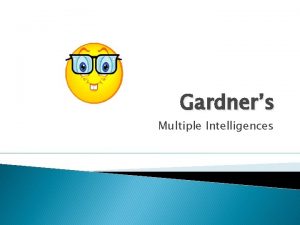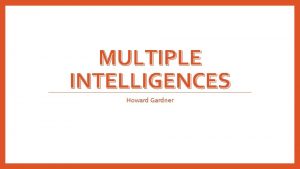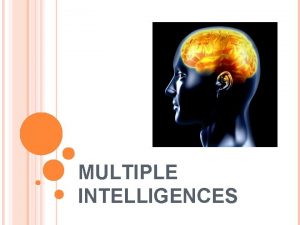Howard Gardners Multiple Intelligences Multiple Intelligences Theory Howard











- Slides: 11

Howard Gardner’s Multiple Intelligences

Multiple Intelligences Theory �Howard Gardner’s Multiple Intelligences Theory was first published in Howard Gardner’s Book: Frames of Mind (1983) �Initially developed as a contribution to psychology, however Gardner’s theory was soon embraced by education, teaching and training communities.

Intelligence Types Intelligence Type Capability and Perception Linguistic Words and language Logical – Mathematical Logic and numbers Musical Music, sound, rhythm Bodily - Kinesthetic Body movement control Spatial - Visual Images and Space Interpersonal Other people’s feelings Intrapersonal Self – Awareness

Possible Additional Intelligences Intelligence Type Capability and Perception Naturalist Natural Environment Spiritual / Existential Religion and “Ultimate Issues” Moral Ethics , humanity , value of life

Linguistic �Description: Understands the relationship between communication and meaning �Typical Roles: Writers , Lawyers, Journalists, Poets, Copy Editors, Radio Personalities �Activities or Tests: Write a set of instructions, speak on a subject, edit a written work �Preferred Learning Style: Words and Language

Logical - Mathematical � Description: detecting patterns, scientific reasoning and deduction, analyze problems, perform mathematical calculations � Typical Roles: Scientists, engineers, computer experts, accountants, statisticians, traders, bankers � Activities or Tests: Assess value, perform mental arithmetic calculation, analyze how a machine works � Preferred Learning Style: numbers and logic

Musical �Description: Musical awareness, appreciation and use of sound �Typical Roles: Producers, party planners, voice coaches, entertainers �Activities or Tests: Interpret musical styling, specify mood music, play a musical instrument �Preferred Learning Style: Music, Sounds Rhythm

Bodily - Kinesthetic �Description: body movement control, manual dexterity, physical agility and balance: eye and body coordination �Typical Roles: dancers, soldiers, fishermen, chefs, gardeners, acupuncturists, fire fighters �Activities or Tests: Juggle, Toss something, demonstrate a sports technique �Preferred Learning Style: physical experience and movement, touch and feel

Spatial - Visual � Description: visual and spatial perception, interpretation of visual images, pictorial imagination and expression � Typical Roles: photographers, artists and sculptors, inventors, cosmetics and beauty consultants � Activities or Tests: Design a costume, interpret a painting, create a room layout, create a corporate logo � Preferred Learning Style: pictures, shapes, images, 3 D Space

Interpersonal � Description: Perception of other people’s feelings, ability to relate to others, interpretation of behavior and communications � Typical Roles: Therapists, HR Professionals, mediators, counselors, politicians, teachers � Activities or Tests : Interpret moods from facial expressions, demonstrate feelings through body language � Preferred Learning Style: human contact, communications, cooperation, teamwork

Intrapersonal � Description: Self – Awareness , Personal cognizance, personal objectivity, the capability to understand oneself � Typical Roles: Arguably anyone who is self – aware and involved in the process of changing personal thoughts , beliefs and behavior in relation to their situation � Activities or Tests: Decide options for personal development � Preferred Learning Style: self reflection, self discovery
 Howard gardners theory of multiple intelligences
Howard gardners theory of multiple intelligences Gardners multiple intelligence test
Gardners multiple intelligence test Howard gardner 9 intelligences
Howard gardner 9 intelligences Multiple intelligences and differentiated instruction
Multiple intelligences and differentiated instruction Howard gardner ap psychology
Howard gardner ap psychology Bgfl multiple intelligence test
Bgfl multiple intelligence test Multiple intelligences
Multiple intelligences Montessori for multiple intelligences
Montessori for multiple intelligences Gardner's multiple intelligences
Gardner's multiple intelligences What is interpersonal intelligence
What is interpersonal intelligence Multiple intelligences in the classroom
Multiple intelligences in the classroom Multiple intelligences
Multiple intelligences
